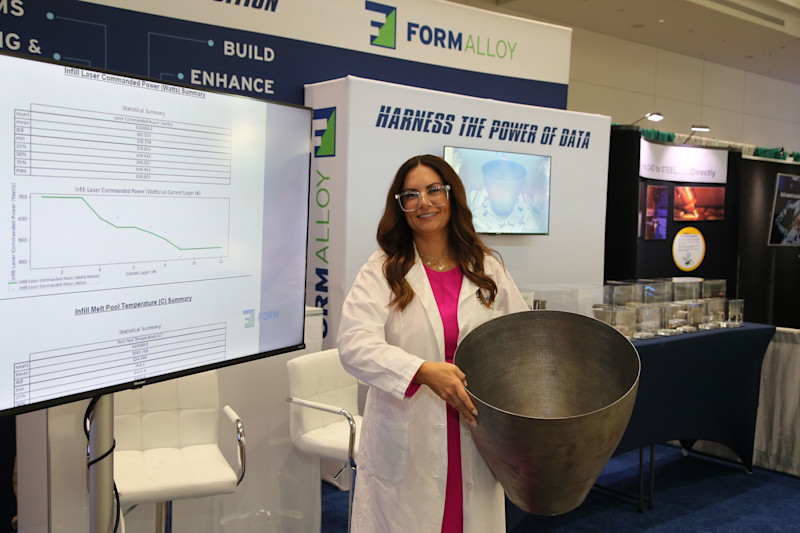Melanie Lang, co-founder and CEO of FormAlloy, shares how her metal AM company provides an elegant solution to the problem of finding the right part, in the right place at the exact right time. Rather than having to scramble to find a replacement part when something breaks, or having to rejigger what's available to provide a temporary fix, companies like FormAlloy can design and make the part right away even for complex military systems. It's less the case today, but last year it seemed like any and all inconveniences could be attributed to problems in the supply chain. Did the grocery store run out of your favorite toothpaste? Supply chain. Is the couch you ordered expected to arrive sometime after the twelfth of never? Oh, that's the supply chain's fault for sure. Does your back hurt? I don't know how, but it's probably the supply chain.
For most consumers the stakes for supply chain issues were pretty low. Having to switch brands of deodorant or sit for another three months in a couch you've sat in for a decade wouldn't be the end of the world. In other scenarios, however, gaps in the supply chain can create greater risks with far larger real-world consequences, say, for instance, on the battlefield.
"A big challenge is the ability to support and repair legacy systems on demand," says Melanie Lang, co-founder and CEO of FormAlloy, a metal additive manufacturing technology company. Lang notes that as sophisticated as it is, today's military also still relies on older systems that are still in operation and have not yet been replaced or modernized.
"Today, you have highly sophisticated military systems in the field that have been deployed and used beyond the life they were originally designed for," she says. "It's good they have continued to meet the demands, but it can create maintenance and supply chain challenges because you have hard-to-replace parts, and it's hard to predict when that's going to happen."
Even when these systems need repair in the U.S., on a base rather than in a forward deployment area, it isn't as though there's a Home D-O-Depot for specialized parts in a legacy weapons system around the corner. "Even if you were located somewhere on a base in the U.S. there's no guarantee that you are going to be able to find the same exact part for this piece of equipment, which, again, was may have been designed decades ago," Lang said. The metal AM technology can also support modernization efforts by providing parts with enhanced performance or life, and again, the on-demand repair and replacement.
To the issues of finding the right part, in the right place at the exact right time, additive manufacturing provides an elegant solution. Rather than having to scramble to find a replacement part when something breaks, or having to rejigger what's available to provide a temporary fix, companies like FormAlloy can design and make the part right away. With additive manufacturing, the replacement part can be built quickly, and to the system's exact specifications—providing a much better option than a kludge to tide things over.
Lang notes that with advanced additive processes (and specifically direct energy deposition (DED), FormAlloy's specialty), "you can also make superior performance parts using superior materials and multiple materials in a single build." Not only does additive mean you're getting a custom-designed part to fix the system—you can also get a part that performs better than the one it replaced. "For example, the replacement part can use some type of corrosion- or wear-resistant material to extend its life further," she said. "This technology isn't just meant to be used to sustain older systems, but also to produce really high-quality, high-performing components."
Beyond just quickly produced, better-performing custom parts, what Lang's company and others like it are aiming to provide is greater certainty to their customers, military or otherwise. An organization's leadership can make better decisions and take bolder risks knowing that if, and when, a critical part breaks in their existing system they won't have to cross their fingers and hope the supply chain comes through for them. There's an additive solution for that, no matter what "that" is.
Lang's work in the additive world also illustrates the importance of reshoring, not as a hollow political or patriotic gesture, but as plain old common sense.
"If we've learned anything in the pandemic it's that it's very important to keep manufacturing somewhat local," she says. "There are all kinds of issues you might face when sourcing abroad—lead time challenges, material delays. If we can use additive technology and its power to produce things locally, or regionally, you can avoid many supply chain challenges and delays."






